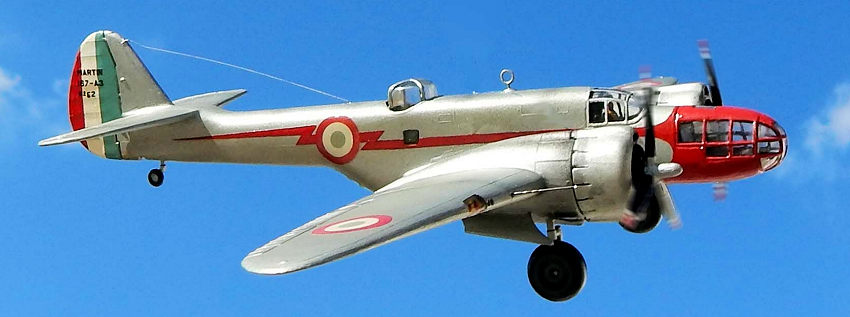
Frog 1/72 Martin Maryland
| KIT #: | F- |
| PRICE: | 7s 6d |
| DECALS: | Two options |
| REVIEWER: | Carmel J. Attard |
| NOTES: |

| HISTORY |
The French government had an order of 215 twin-engined attack bomber designated 167 from Glen Martin Company, Maryland. The Martin 167 A-3 that was delivered to the Armee de l’Air as a three-seat ground attack bomber differed from the prototype in having a 950hp Wright R-1820 Cyclone engine and of course, french equipment. Four 0.3 Belgian built Brownings were fitted firing forward and two in dorsal and ventral position. A semi retractable turret replaced the American dorsal turret.
The Maryland entered Royal Air Force service in much the same way as US-built combat aircraft did, apart from the Hudson that had been purchased directly. This was via the unfilled contracts which were taken over after the French collapse at a time when any combat-worthy aircraft was worth its weight in gold. The ones that survived the war and the undelivered machines went to the RAF as Marylands. 225 were bought by the RAF and these along with the ex-French machines most served in the Mediterranean. The first Maryland departed for Malta on 19th September 1940. Night flying training was carried out at Aldergrove and Maryland AR704 was lost during that period.
It was decided that No.431 flight
should operate the Marylands, initiall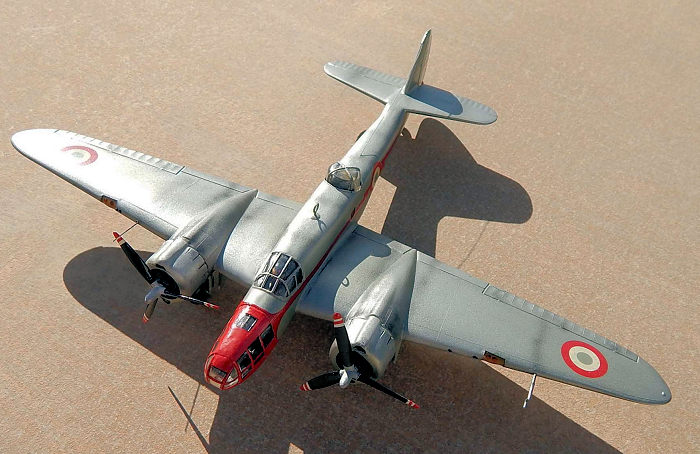 y
at Andover. It was intended to undertake strategic reconnaissance from Malta and
officially came into being on AR712’s departure for Malta on 19th
September 1940. Marylands trickled out slowly to Malta and enough had arrived
for No.431 flight to be upgraded to squadron status. Other Marylands flew direct
from Thorney Island across France and Sardinia. First sortie conducted by the
flight was the photo reconnaissance of Tripoli, Libya. These were followed by
flight of Taranto, Naples, Brindisi, Bari, Palermo and airfields in Sicily,
Pantelleria and Sardinia.
y
at Andover. It was intended to undertake strategic reconnaissance from Malta and
officially came into being on AR712’s departure for Malta on 19th
September 1940. Marylands trickled out slowly to Malta and enough had arrived
for No.431 flight to be upgraded to squadron status. Other Marylands flew direct
from Thorney Island across France and Sardinia. First sortie conducted by the
flight was the photo reconnaissance of Tripoli, Libya. These were followed by
flight of Taranto, Naples, Brindisi, Bari, Palermo and airfields in Sicily,
Pantelleria and Sardinia.
Low-level reconnaissance work was introduced by Pilot Officer Adrian Warbarton whose missions have since been legendary. His first major operation was the pre-strike reconnaissance of Taranto harbour in November 1940 in preparation to the Fleet Air Arm’s torpedo attack on the Italian Navy. Flying his Maryland at low level in bad weather has surprised the Italian defences and proceeded to circle inside the enemy harbour twice when at last the Italians opened fire, Warbarton withdrew momentarily, yet to return for another flight over the target. His photographs provided Swordfish crews with all the details of their target. Three Italian Battleships, a cruiser and a destroyer were put out of action on the night of 11 & 12th November.
Warbarton used the Maryland aircraft both for reconnaissance and in fighter attack role. One of his early reports reads, “I was entering the bay of Naples from South-West at 1,500 feet when I saw an SM79 in brown and sand mottled camouflage heading across the track. Clouds were at 2,000 feet in a solid bank, so if fighters appeared I could retire. I therefore made a stern attack, some pieces of the tail flew off and my rounds started going into the fuselage. I closed the range and concentrated on the starboard engine, which started to smoke, and eventually stopped. My rear gunner wanted to try the new turret, so I broke away and drew parallel to the SM79, slightly above and some 100 yards away to his starboard. My rear gunner put in a burst of about 20 rounds and ignited the petrol, and the SM79 burst into a mass of flames and dived into the sea from 1,000 feet, disappearing immediately. I then carried on with my reconnaissance of Naples and returned to Luqa airfield.”
Warbarton’s operational record must have had few if any equals. His score was 10 enemy aircraft shot down by himself and his crew and 6 destroyed on the ground. During his career he was awarded a DSO & bar, DFC and two bars and the American DFC. Towards the close of 1940 one more Maryland arrived AR713. Thus by the end of the year four Marylands, les one being repaired were on strength. The flight also had two Blenheim IV and after a short while these were then used for maritime search.
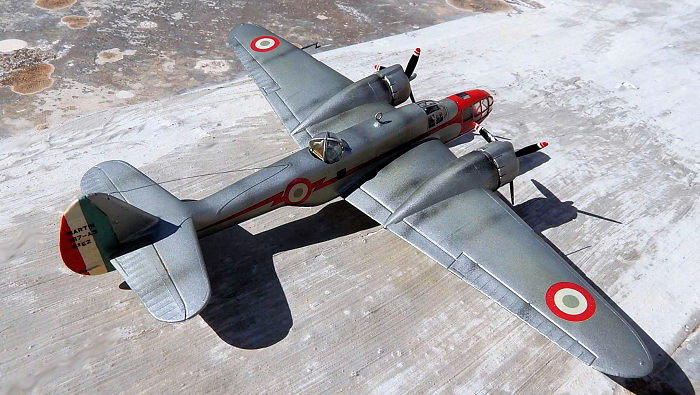
In January 1941 No 431 flight was reconstituted at No 69 Squadron and consisted of 12 Marylands and 10 Beauforts. The first casualty for the newly formed was a Maryland flown by 2 Free Frenchmen. The second Maryland casualty was on 7th March. The aircraft happened to get back to Malta during a raid and promptly attacked and shot down. No 69 remained operational until May 1942. Maryland’s fate during the war years was not always a rosy one especially with more of the type equipping 39 and 203 Squadron all based at Luqa alongside No 69 during a period of relentless bombing by the Luftwaffe, day and night..
AH296 went missing in a ferry flight to Malta on 8.5.41
AH298 missing during flight between Egypt and Malta 15.4.42
AH299 of 39sq went missing on 13.6.41
AH300 of 39sq went missing on 14.6.41
AH358 of 69 sq destroyed during a raid on Luqa airfield
AH364 of 203 overshot landing at Luqa on 12.8.42
AH368 of 39sq destroyed during raid 21.11.41
AH385 of 69sq destroyed during raid 23.1.42
AH394 of 69sq crashed on landing at Luqa 24.2.42
AH404 of 69sq destroyed in air raid on Luqa 24.1.42
AR705 of 69sq destroye3d by bombs at Luqa 24.4.41
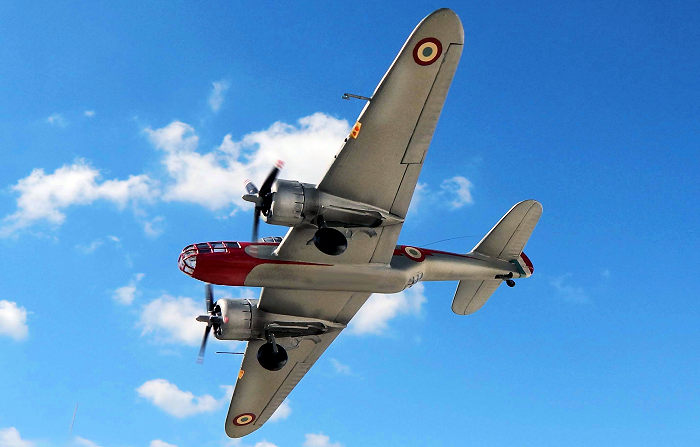
AR706 of 69sq shot down by Bf109 one and half miles north of Dingli, Malta 7.3.41
AR707 of 69sq shot down by Italian fighter off Sicily 11.1.41
AR709 of 69sq burnt out in air raid on Luqa 22.3.42
AR711 of 69sq belly-landed at Ta’Qali airfield, Malta 1.3.42
AR712 of 69sq collapsed on landing at Luqa 26.9.40 and destroyed by incendiary bomb the next day.
AR714 of 69sq damaged by Bf109 and ditched at Marsaxlokk Bay 15.2.42
AR719 of 431Flight went missing on ferry flight to Malta 11.40
AR721 of 69sq shot down by Bf109 off Tignie Point, Malta 28.8.41
AR724 of 69sq destroyed in air raid, Malta 11.5.41
AR725 of 69sq crashed on ferry flight to Malta 15.2.42
AR726 of 69sq missing after attack on convoy 26.6.41
AR733 of 69sq damaged by Bf109 off Malta and crash-landed at Luqa 13.2.42
AR735 of 69sq attacked by friendly Hurricane and crash-landed at Luqa 14.4.41
AR739 of 69sq stalled on single engine approach to Luqa 10.8.41
A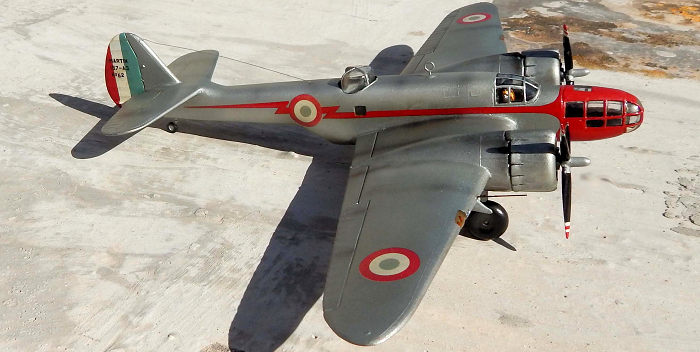 R750
of 69sq belly-landed at Luqa
R750
of 69sq belly-landed at Luqa
AR751 of 69sq overshot runway at luqa 13.12.41
BJ427 of 69sq went missing from recce flight off Messina.
BS763 of 69sq destroyed in air raid on Luqa 12.5.42
BS764 of 39sq went missing 7.9.42
BS766 of 69sq crashed on emergency approach at Luqa 23.12.41
BS772 of 69sq damaged by Bf110 and belly-landed at Luqa 15.1.42
BS776 of 39sq destroyed by bombs at Luqa 3.1.42.
During April 1942 Maryland bombers were withdrawn to be replaced in June by Baltimores and in August the squadron had a flight of each of Baltimores, Spitfires and Wellingtons. On 20th November Warbarton was promoted to the rank of Wing Commander and given command of the squadron.
| THE KIT |
Molded in grey styrene the kit contained flush on most parts. Had raised surface panel detail, instructions contains eight stages of construction which were clearly illustrated. Decals are for a Martin 167 Maryland of No24 sq South African AF. This is in dark earth and desert sand camouflage and azure blue undersides.. Other option is for a Maryland of Escadrille Nantes, GBII/20 Bretagne belonging to Free French Forces. Camouflaged in dark green and dark earth and sky blue. There are close to 36 parts including three clear ones.
| CONSTRUCTION |
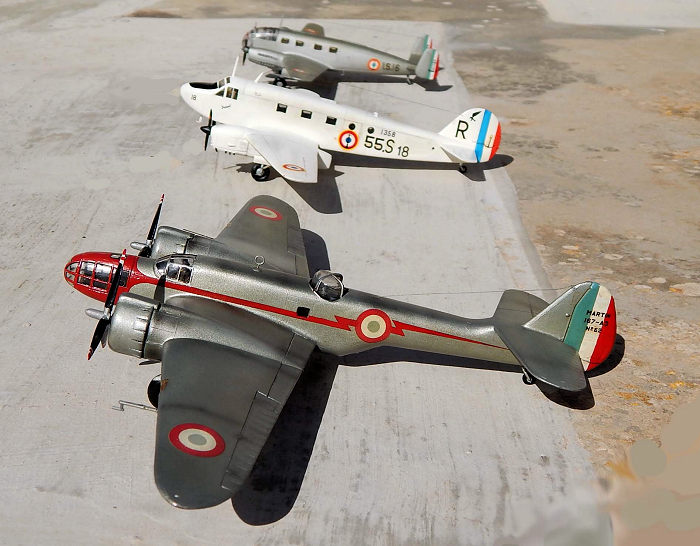 Kit was
easy build by following instructions. Work done incorporates removal of dorsal
canons, Added detail to interior of cockpit, adding seat straps to crew figure
and detail to nose compartment. Wireless made from nylon thread; Tail wheel
compartment modified in shape. Reduced wheel well doors thickness. Altered nose
contour to smoothen nose profile.
Kit was
easy build by following instructions. Work done incorporates removal of dorsal
canons, Added detail to interior of cockpit, adding seat straps to crew figure
and detail to nose compartment. Wireless made from nylon thread; Tail wheel
compartment modified in shape. Reduced wheel well doors thickness. Altered nose
contour to smoothen nose profile.
Kit was finished in overall silver/aluminium having a red nose and cheat line that runs the length of fuselage. It represents a Martin 167 of Armee de l’Air serving with No 34 of GB 1/52, Morocco circa 1940/41 periods.
| CONCLUSIONS |
As one would expect with a kit of over 40 years ago, it required some work on but in the end it turned into a respectable little model of acceptable accuracy and a type that was very common site to spot in Maltese skies during the war years while in service with the RAF 69 Sq and others based at Luqa airfield.
14 March 2017
Copyright ModelingMadness.com
If you would like your product reviewed fairly and fairly
quickly, please
contact
the editor
or see other details in the
Note to
Contributors.
Back to the Main Page
Back to the Review Index Page
Back to the Previews Index Page